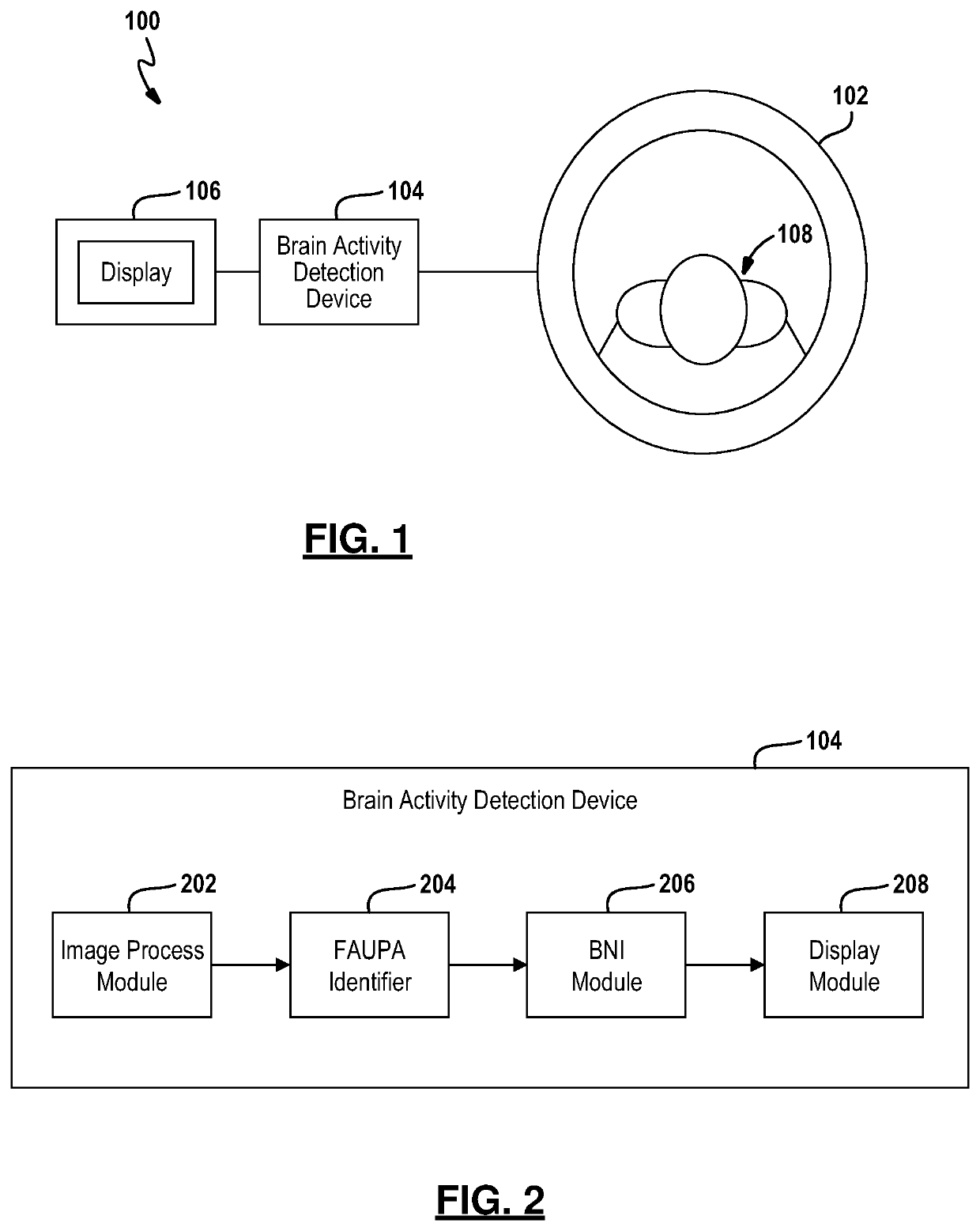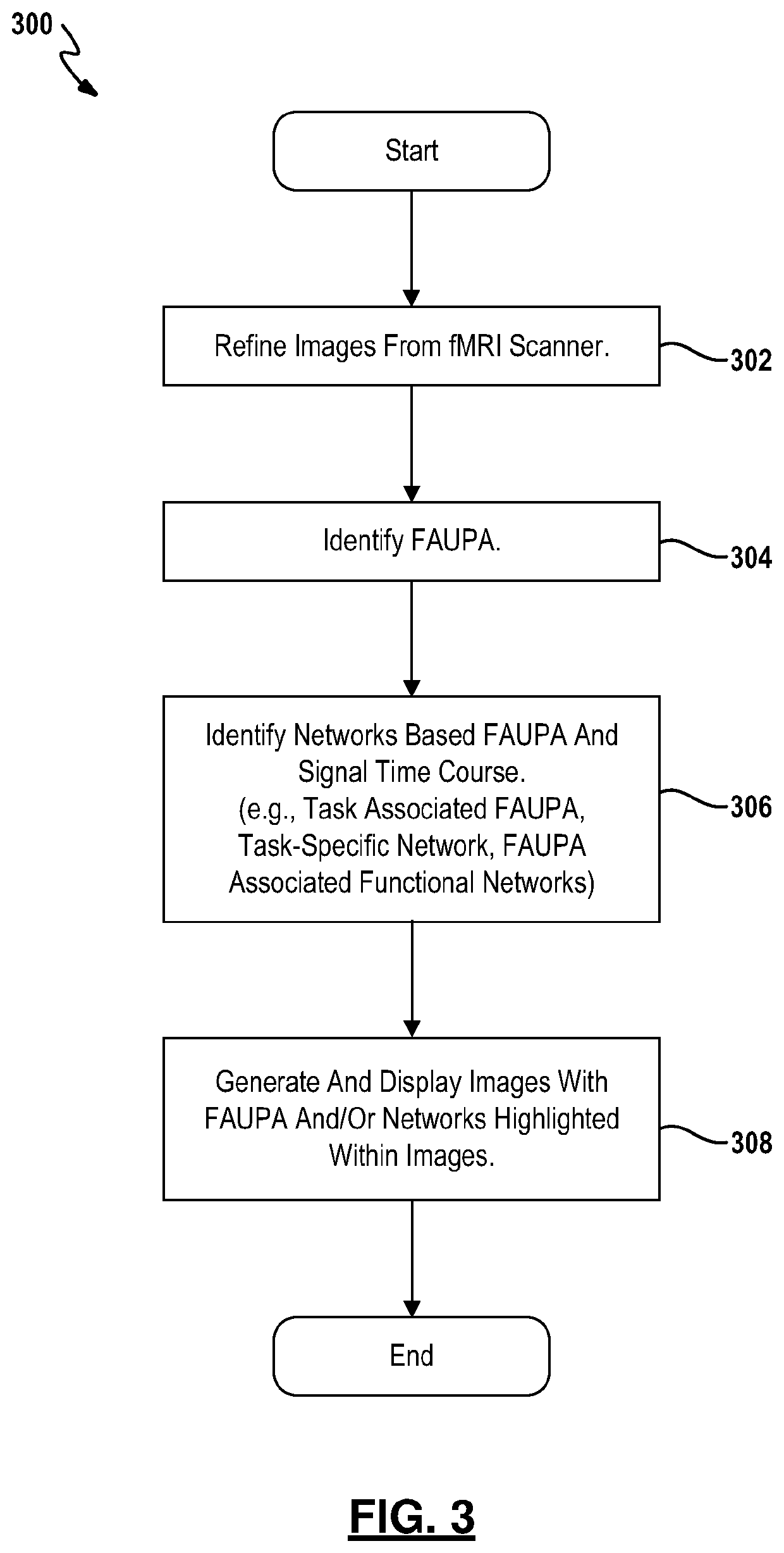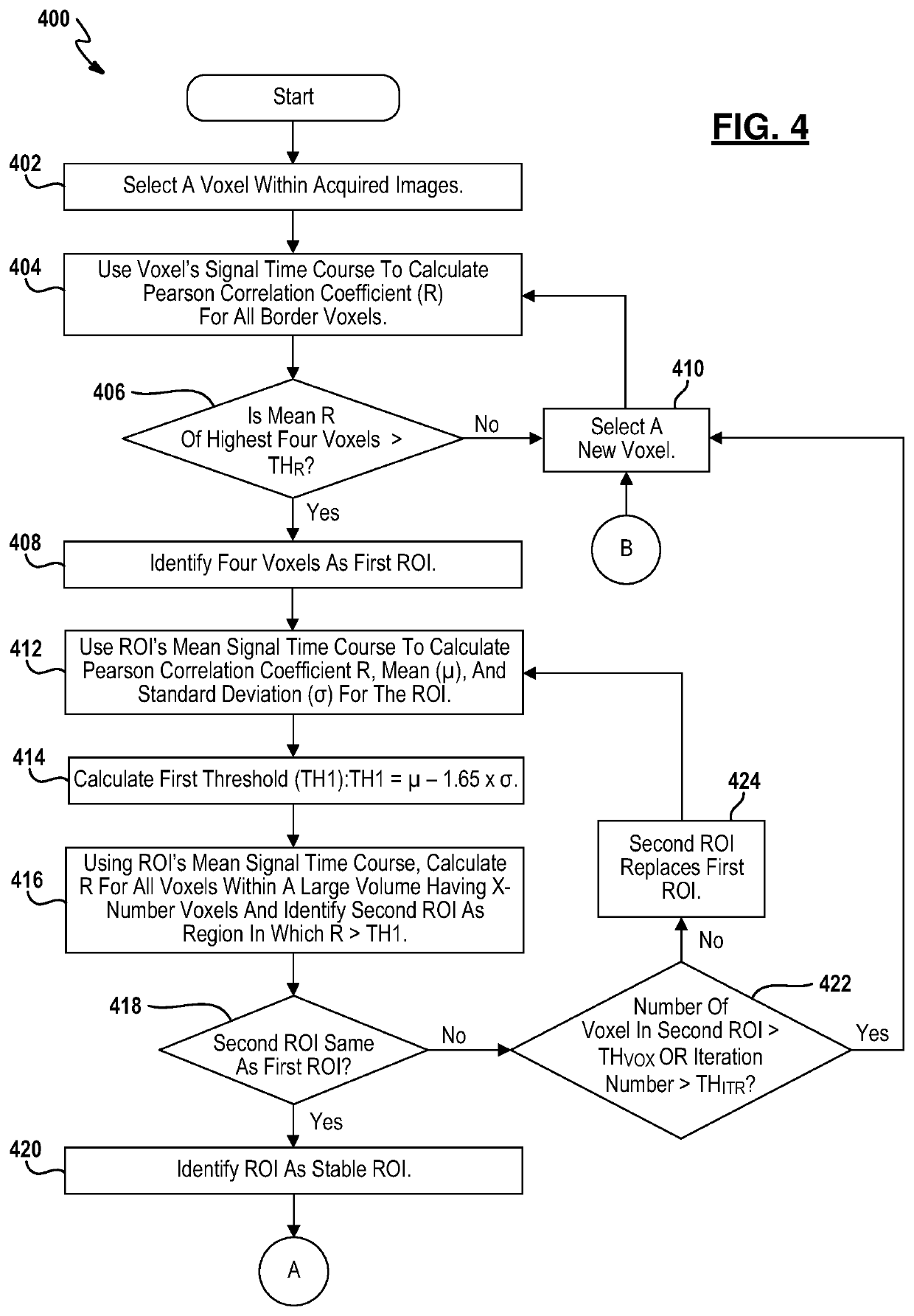Method and system for determining brain-state dependent functional areas of unitary pooled activity and associated dynamic networks with functional magnetic resonance imaging
a functional area and functional magnetic resonance imaging technology, applied in the field of detecting neural activity, can solve problems such as spatial autocorrelation problems, false readings, and inability to accurately detect neural activity
- Summary
- Abstract
- Description
- Claims
- Application Information
AI Technical Summary
Benefits of technology
Problems solved by technology
Method used
Image
Examples
Embodiment Construction
[0021]The present disclosure describes the detection of a functional area of unitary pooled activity (FAUPA) within the brain using BOLD signals. A FAUPA is defined as an area in which the pooled activity is a dynamically unitary activity or, in other words, an area of the brain in which the temporal variation is the same across the entire area. This unitary activity implies a perfect temporal correlation everywhere for the activity-induced BOLD response. Specifically, in the FAUPA, the Pearson correlation coefficient (R) is equal to 1. When a FAUPA is measured with fMRI, the voxelwise signal time course is no longer perfectly correlated among each other due to noise. Computing the temporal correlation of its mean signal time course with a voxel's signal time course yields a Pearson correlation coefficient for each voxel, and the mean and standard deviation of these Pearson correlation coefficients can be used to establish a statistical model to determine the FAUPA.
[0022]The basis f...
PUM
 Login to View More
Login to View More Abstract
Description
Claims
Application Information
 Login to View More
Login to View More - R&D
- Intellectual Property
- Life Sciences
- Materials
- Tech Scout
- Unparalleled Data Quality
- Higher Quality Content
- 60% Fewer Hallucinations
Browse by: Latest US Patents, China's latest patents, Technical Efficacy Thesaurus, Application Domain, Technology Topic, Popular Technical Reports.
© 2025 PatSnap. All rights reserved.Legal|Privacy policy|Modern Slavery Act Transparency Statement|Sitemap|About US| Contact US: help@patsnap.com



